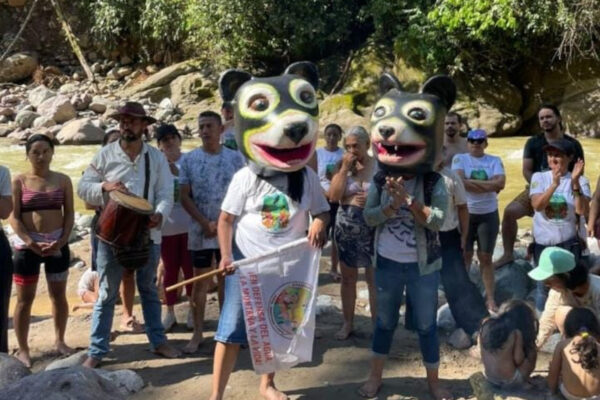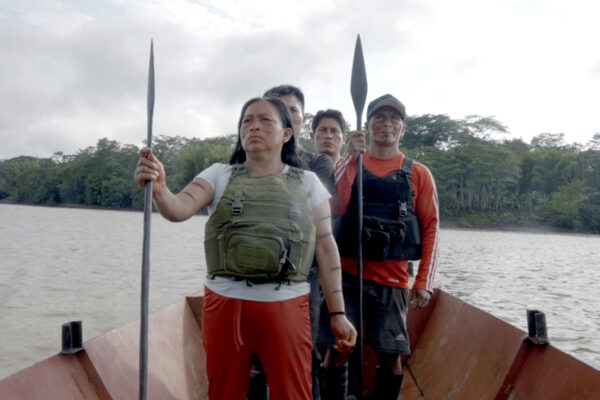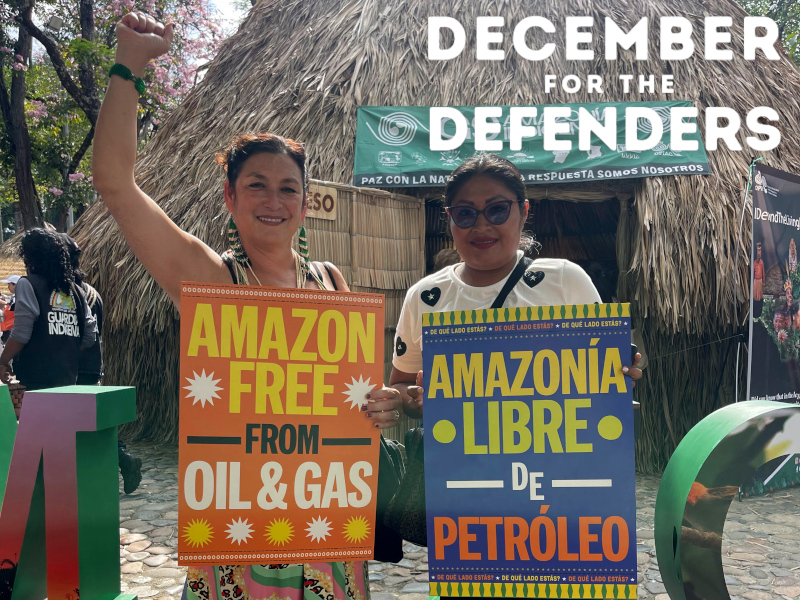Download full report | Executive summary
View Amazonía for Life website
The Amazon is in the midst of a tipping point crisis as deforestation and high degradation combined have already reached 26% of the region. The tipping point must be understood as the beginning of a metastasis or the irreversible destruction of the ecosystem. As a result, savannization is already taking place there. However, preserving 80% of the Amazon by 2025 is still possible. 2030 presents a challenge given the current state of the region. This goal [80%] requires urgent measures to safeguard the remaining 74% (629 million hectares) of the Amazon that are Intact Key Priority Areas (33%) and with Low Degradation (41%).
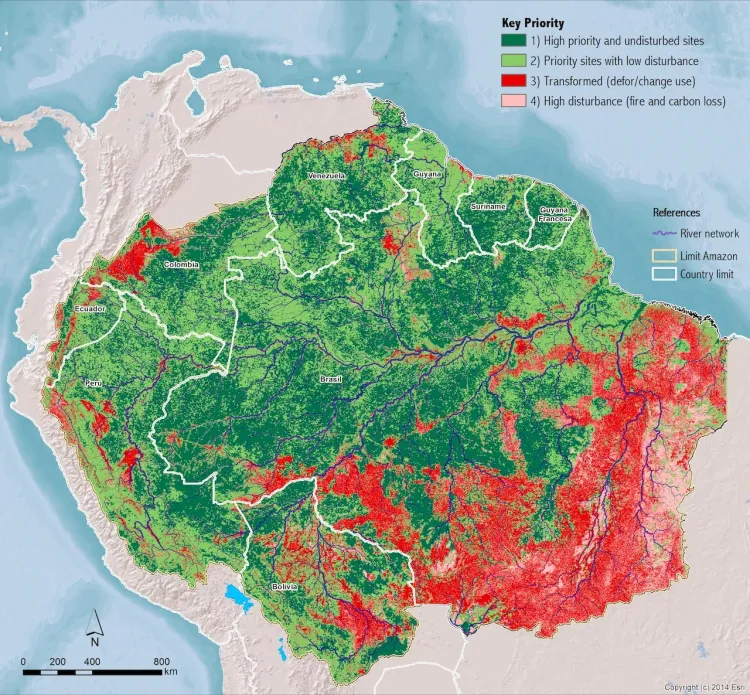
The research addresses the problem at the national level in the nine countries of the basin and shows that 34% of the Brazilian Amazon has entered a process of transformation. This is true for 24% of the Bolivian Amazon, 16% in Ecuador, 14% in Colombia and 10% in Peru, which are the countries with the highest rates. Savannization is already a reality in the southeast of the region, mainly in Brazil and Bolivia, countries that concentrate 90% of all combined deforestation and degradation in the region. The data shows that both countries are responsible for 90% of the deforestation and degradation of the entire region and that they share invasions or subjugation as the main cause of deforestation. This problem puts the States and their legal frameworks at the center of the solutions.
“There is a direct correlation between the destruction of our home and the murders of indigenous leaders, the defenders of our territories. We have confirmed that the recognition of the rights of the Indigenous peoples of the Amazon basin is an urgent solution to safeguard 80% of the Amazon. We must all act in unity, and we must do it before 2025.”
José Gregorio Díaz Mirabal, Coordinator General of COICA
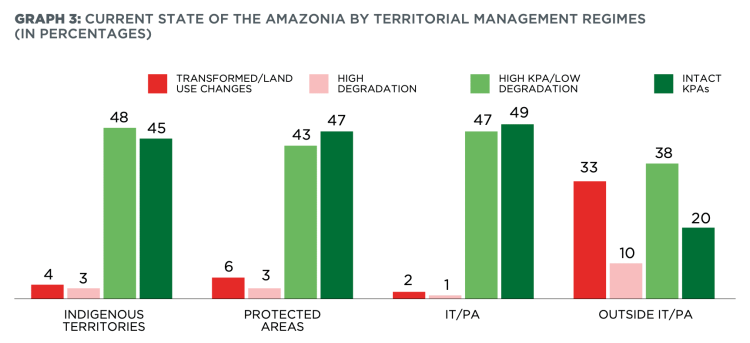
“…The unbridled destruction and greed of our ancestral territories, our Amazon, in the north of the country, is the face of the historical violation of rights to which we, the indigenous peoples of Brazil, have been subject for decades. Our territories are not respected or legally recognized … In the process we resist with our lives, we are being killed for defending our territory throughout the region. Brazil has to be an example not to follow, history that cannot be repeated.”
Nara Baré, Former Coordinator of Indigenous Organizations of the Brazilian Amazon COIAB, Brazil
Indigenous Rights
This research corroborates the critical role of indigenous peoples in protecting the Amazonia. Indigenous Territories (IT) and Protected Areas (PA) are vital to protect the region. Both regimes represent nearly half (48%) of the Amazon. 86% of the deforestation took place outside national PA and IT. The other half (52%) are undesignated areas that are in danger of disappearing and without which it is impossible to avert the tipping point.
The level of conservation of the Indigenous Territories is comparable and even higher than that of Protected Areas and the overlapping areas between both regimes. Yet, Indigenous Territories do not have budget allocations from their governments. The worldview and knowledge of more than 500 distinct indigenous peoples who have inhabited the Amazon for millennia living in harmony with nature is what keeps the forest standing. Recognizing indigenous rights on which the integrity of ecosystems is based is a differentiating factor to face the climate crisis that must be integrated into conservation policies.
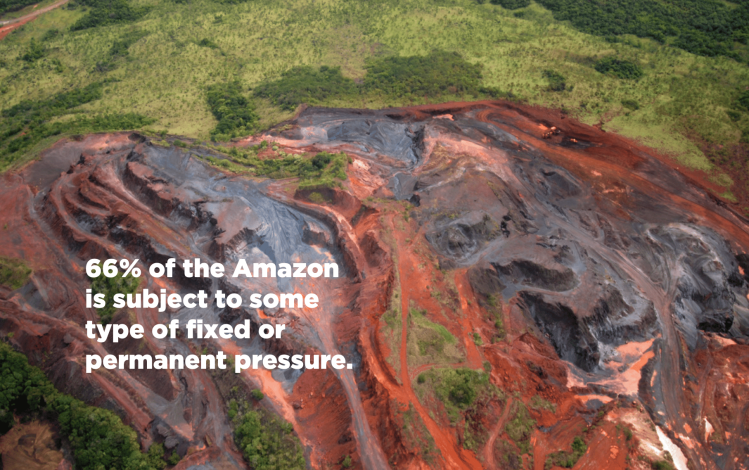
“The Peoples in a situation of Voluntary Isolation and Initial Contact (PIACI) are extremely vulnerable and are in danger of extinction due to the absence of protection measures for their lives and their territories. Only today, after a global pandemic, do we understand the need to self-isolate in order to survive. The deep Amazon is home to more than 200 peoples in isolation…The disconnection of our PIACI brothers with this world leaves their disappearance as peoples in impunity…”
Jorge Pérez, President of AIDESEP, Peru
Biodiversity
Indigenous peoples safeguard the remaining 80 percent of the world’s biodiversity. The Amazon is megadiversity: it is the habitat with the greatest biodiversity in the world, hosting 5 of the 17 megadiverse countries on the planet. The presence of at least 16,000 tree species in the biome is estimated. There are regions like the Yasuní National Park in Ecuador that register, on average, around 260 species of trees in one hectare (Pérez et al. 2014). By including the different groups of organisms, the region has 25% of all terrestrial biodiversity and more than 10% of all known species on Earth (Mittermeier et al. 2002; Prance & Lovejoy 1985).
“…Indigenous peoples have fulfilled our role of living in harmony for millennia, in reciprocity and symbiosis, thus protecting the forests, rivers and animals, but we cannot continue to do so without the effective recognition of our collective and territorial rights.”
Michaell McGarrel Coordinator de Derechos Humanos y Politicas de COICA, Guyana
Deforestation Drivers
66% of the Amazon is subject to some type of fixed or permanent pressure. Current legal frameworks create conditions for states to grant licenses in intact forests or ITs without the free, prior and informed consent of the populations that inhabit the region. The restorative capacity of the Amazon is running out. An immediate transition is necessary.
The agricultural sector is responsible for 84% of Amazonian deforestation. Invasions as well as fires, are directly related to the expansion of the agricultural frontier. PA and IT were not exempt from the problem. The expansion of the agricultural frontier grew within the PA 220% between 2001-2018 and in the IT it grew by 160% in this same time period. In both cases, forest was replaced. The cattle industry is the biggest driver of deforestation in the Amazon. Deforestation caused by cattle ranching in the Amazon rainforest accounts for nearly 2% of global CO2 emissions annually.
Mining is present in all the countries of the Amazon, affecting 17% of the region. 9.3% of all mining activity is located in PA and an additional 9% in IT. 85% of the mining activity in IT occurs in already recognized IT. Currently, half of the mining areas in AP and 68% of those present in TI are in the application phase, which means that they could be reversed. Illegal mining that lacks registration is expanding throughout the basin.
Oil blocks occupy 9.4% of the surface of the Amazon (80 million hectares). 43% of the oil blocks are located in protected areas and indigenous territories. 89% of the crude oil exported from the Amazon comes from Ecuador and its main destination is the US. More than half (52%) of the Ecuadorian Amazon is an oil block, 31% in Peru, 29% in Bolivia and 28% in Colombia.
Of the 350 hydroelectric plants (CH) that operate in the basin, 483 are projected for future build-out, adding up to a total of 833 potential hydroelectric plants. The construction of hydroelectric projects alters the free flow of more than 1,100 tributaries that make up the Amazon basin.

Conditioned Debt Forgiveness
The debt must be understood as a systemic problem that intertwines all the activities of the countries of the South and the North. Analyzing separately climate change, poverty, food insecurity, debt, loss of ecosystems and biodiversity, violence and the economy in general, reveals a bias that inhibits the possibility of responding to the crisis that is one with various symptoms. Debt is one of the structural causes of the destruction of the Amazon and other vital ecosystems for humanity.
During the pandemic, the Amazon States faced serious levels of indebtedness: Brazil 101% of GDP, Ecuador 65% of GDP, Colombia 61% of GDP, among the highest. At the end of 2021, Latin America was the most indebted emerging region on the planet. This result of the pandemic shock adds to five decades with at least 50 sovereign debt crises and sovereign debt restructurings. According to ECLAC data (CEPAL 2021), gross government debt averages 78% of regional GDP in Latin America. Total debt service alone represents 59% of its exports of goods and services.
“The external debt to the Amazonian countries must be understood as a systemic driver and fuel for extractive activities throughout the region. As a coalition, we propose the cancellation of this debt as an immediate protection measure to alleviate the economic challenges that our countries are going through. This debt forgiveness proposal would be conditioned on the protection of 80 percent of the Amazon.“
Tuntiak Katán Vice Coordinator COICA, Ecuador
How Can I Help?
Show your support for protecting 80% of the Amazon by 2025 and endorse this declaration developed by Indigenous leaders and allies.



